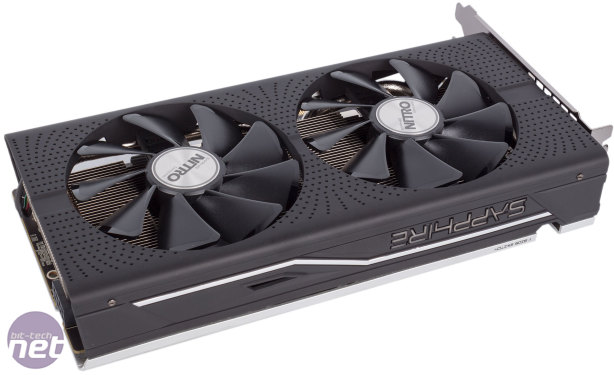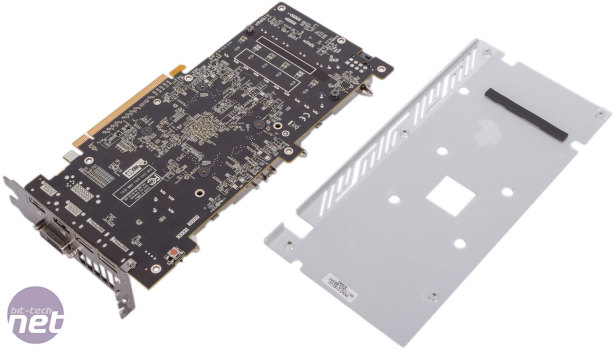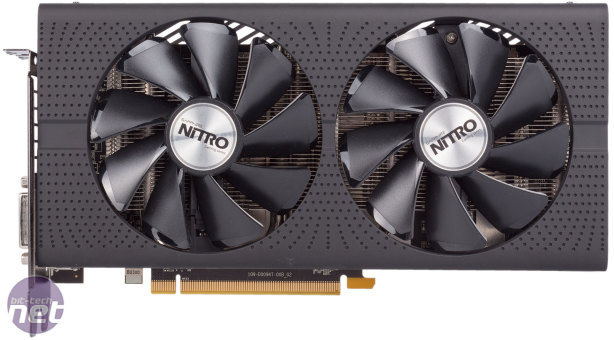Performance Analysis
Nvidia doesn't have a current generation competitor to this card at the moment, but going by average frame rates, this overclocked RX 470 holds a 75 percent lead over the GTX 960, which launched at a similar price. Interestingly, the lead in DirectX 11 games is only 50 percent, but in DirectX 12 it offers a full doubling of performance on average. The GTX 970 is also relevant since it can now be had for £200, but the Sapphire card is able to beat it on average by almost 10 percent. The GTX 970 does still hold a lead in Fallout 4, but elsewhere and again especially in the DX12 games the RX 470 is the faster of the two. As for alternative AMD parts, the R9 380 can be found now for £140, but this Sapphrie card, which is nearly 30 percent more expensive, offers a performance uplift in both DX11 and DX12 of nearly 40 percent.If you previously bought a lower priced card and are now considering stepping up to a higher price segment, there are big gains to be had over even relatively recent cards. The Sapphire RX 470 Nitro OC offers, on average, 2.1x the performance of a GTX 950 OC (over 3x in one instance) and it trumps the R7 370 by 121 percent on average as well.
As for other current-gen mid-range cards, the GTX 1060 Founders Edition only offers a five percent lead on average over this card – in titles like Fallout 4 it its 20 percent faster but in others like Hitman it actually loses to the RX 470. Meanwhile, reference clocked RX 480 8GB and RX 480 4GB SKUs only offer four and three percent leads over this Sapphire card respectively.
These comparisons are to act as a rough guide – exact differences between cards will always depends on exact clock and boost speeds (as well as cooling and power limits which directly impact these) as well as the game tested - differences in games are a lot more title-dependent than they have been for a while as we transition from DX11 to DX12 it seems. Nonetheless, the picture that emerges from them is that the RX 470, or at least this overclocked version, is a potent GPU that comfortably trumps anything priced below it while nipping at the heels and even occasionally taking a bite out of those above it.
As we said, AMD is positioning this card as its >60fps 1080p workhorse. AMD and Nvidia both tend to work in average frame rates in statements like these, and while these are useful for generalised comparisons between cards it's the minimums that are more important and are truly felt in gameplay. In our suite, only one game is above 60fps on the minimum and that's The Witcher 3 which we test at 'High' rather than 'Ultra' settings. All the other games manage to stay in the 30-60fps range, which is the sweet spot for comfortable, smooth frame rates. Averages, meanwhile, range from 55-72fps so 60fps will certainly still be common, but it's good to know the GPU can keep things smooth even in more challenging scenes. These frame rates make the card very suitable for pairing with a FreeSync monitor – 1080p FreeSync panels can now be had for less than £100.
Even 1440p performance is pretty solid, with mostly playable results, but we'd wager that a bigger investment will be worth it in the long run as this is still quit a challenging resolution.
While the card's boost frequency is rated at 1,260MHz, it wasn't quite able to maintain this but equally is wasn't far off. In games, it never seemed to dip below 1,220MHz, but it was frequently fluctuating to higher levels. Increasing the power limit saw 1,260MHz hit constantly, so it's not an issue related to thermal throttling.
Despite the imposed power limitations, power consumption on this chip is higher than we were expecting. By that, we mean it's significantly higher than an RX 480 8GB or RX 480 4GB – system power consumption was close to 340W compared to around 300W. We're honestly not sure why this is, but it was a consistent result across multiple retests. If efficiency is a major factor for you, the RX 480 and GTX 1060 both seem to be better.
The delta T is in line with what you get from a GTX 1060 Founders Edition – the card is able to manage its temperatures adequately. When we initially put the card under load, the fan speed climbed to 46 percent (around 1,900 RPM) to keep the GPU within its thermal limits but it eventually settled on 41 percent (about 1,750 RPM) after prolonged load. At this speed, the fan was just about noticeable in our test system. It's not distractingly loud, but if you want to keep noise down to a minimum it's probably not that card for you.
Overclocked, performance increased by 8 or 9 percent, which isn't a bad haul for no additional cost. This was also enough to push the card past the RX 480 and GTX 1060 in the two games we tested. System power consumption rose even further to 357W, however, and the delta T climbed a couple of degrees too. Fan speed and thus noise output, however, remained constant.

MSI MPG Velox 100R Chassis Review
October 14 2021 | 15:04













Want to comment? Please log in.